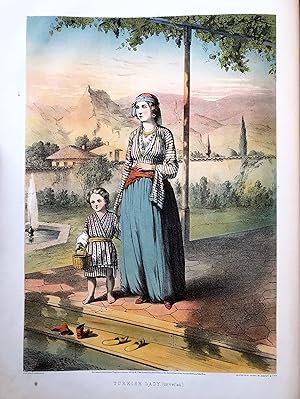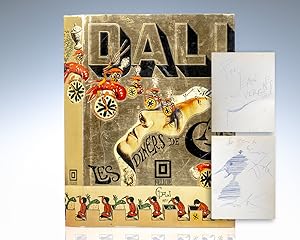cuisine, Ancien ou d'occasion (Plus de 55 000 résultats)
Type d'article
- Tous les types d'articles
- Livres (51 924)
- Magazines & Périodiques (1 719)
- Bandes dessinées (33)
- Partitions de musique (10)
- Art, Affiches et Gravures (166)
- Photographies (335)
- Cartes (2)
-
Manuscrits &
Papiers anciens (1 291)
Etat
Reliure
Particularités
- Edition originale (7 404)
- Signé (886)
- Jaquette (4 808)
- Avec images
- Sans impression à la demande (55 479)
Livraison gratuite
Pays
Evaluation du vendeur
-
Kreutterbuch (.)
Edité par sans éditeur Kreutterbuch, Darin underscheidt, Nammen und Würckung der Kreutter, (.), 1577
Vendeur : Librairie La Jument Verte, Strasbourg, France
Membre d'association : ILAB
Kreutterbuch, Darin underscheidt, Nammen und Würckung der Kreutter, Stauden, Hecken unnd Beumen, sampt ihren Früchten, so inn Teutschen Landen wachsen [.]. Jetzund auffs new mit allem fleiss ubersehen, und mit vilen nützlichen Eperimenten gebessert und gemehret. Durch. Melchiorem Sebizivm.Strasbourg, Josiam Rihel, 1577.In-folio de (1) f. blanc + (30) ff.+ 450 ff.+ (22) ff. + (1) f. blanc.Peau de truie sur ais de bois, dos à nerfs orné de filets à froid, plats biseautés estampés à froid de décors floraux et de portraits de personnages célèbres, fermoirs métalliques. Reliure de l'époque titrée à froid et encrée en noir sur le premier plat "Kreuter Buch Bocks".Des salissures anciennes affectant la marge intérieure des 7 premiers feuillets, annotations de l'époque à l'encre brune en marges des feuillets d'index.Edition rarissime, entièrement mise en couleurs à l'époque.Il s'agit de l'édition la plus estimée de Hieronymus Bock, augmentée par Melchior Sebitz et illustrée des célèbres gravures sur bois de David Kandel.Celle-ci comprend pour pour la première fois, le fameux traité gastronomique de Bock "Teutsche Speisskammer". L'iconographie de ce volume se compose de plus de 590 gravures sur bois. Le portrait de l'auteur, le blason du dédicataire (de Philippe-Guillaume d'Orange-Nassau), la marque de l'imprimeur, les représentations de plantes et de scènes de métiers de bouche, aliments et animaux.Ouvrage en coloris main d'époque d'une grande finesse. Les couleurs sont d'une très belle vivacité et ont gardé toutes leurs fraîcheurs.Edition la plus recherchée du grand livre de botanique de Bock, le plus richement illustré et augmenté du traité culinaire.Médecin et botaniste, Hiernoymus Bock (1498-1554) est, à l'égal de Brunfels et de Fuchs, un des trois "Pères de la botanique allemande". L'essor de la botanique à la Renaissance se caractérise par une iconographie entièrement renouvelée, dès lors que l'image se devait de permettre non seulement la compréhension du texte descriptif, mais l'identification de la plante à des fins thérapeutiques. Commentateur des textes de l'Antiquité et pionnier de l'observation directe, l'intendant du jardin botanique de Zweibrücken a collecté un grand nombre de spécimens, précisant l'origine des plantes, les conditions de leur herborisation ainsi que leurs vertus médicinales. "One of the earliest to give original descriptions of plants instead of relying on what Dioscorides or Pliny had written" (Morton, History of Botanical Science, p. 125).Le texte du Kreütterbuch vit le jour en 1539, sans illustration, faute de moyens financiers. Arber observe que ce fut en quelque sorte une chance qui le stimula, l'obligeant à décrire minutieusement chaque plante, à tel point que Fuchs, critiqué pour l'indigence de ses descriptions, en reprit certaines mot pour mot. (Arber, Herbals, 1986, p. 151-153).La première édition illustrée (468 bois) remonte à 1546 ; iconographie portée à 530 gravures en 1551. La présente édition de 1577, donnée par le médecin Melchior Sebitz l'ancien, recteur de l'Université de Strasbourg, intègre pour la première fois le manuel de cuisine de Bock qui avait été publié séparément en 1550, sans illustration. Édition estimée, continûment rééditée jusqu'au XVIIe siècle. Elle a été retenue pour la réimpression en fac-similé (Munich, 1964). L'illustration comporte 590 bois environ, dessinés et gravés par David Kandel, coloriés à l'époque.Mariette a vanté le talent et la précision de David Kandel (1520-1592), peintre de fleurs et graveur. L'artiste strasbourgeois ne s'est pas borné à interpréter les compositions de Fuchs ou de Brunfels, il en a donné une centaine de son cru. Ses dessins restituent les plantes, des racines à la fleur, agrémentées parfois de scènes de genre, outre le portrait de l'auteur, à pleine page dans un encadrement architectural, et le blason de Philippe-Guillaume d'Orange-Nassau, également à pleine page.Exemplaire de grande qualité où l'apport de la couleur est strictement d'ép.
-
ÉLECTRICITÉ DIX RAYOGRAMMES DE MAN RAY ET UN TEXTE DE PIERRE BOST.
Edité par Compagnie Parisienne de Distribution d'Électricité, Paris, 1931
Vendeur : Andrew Cahan: Bookseller, Ltd., ABAA, Akron, OH, Etats-Unis
Edition originale Signé
Ray, Man (illustrateur). First edition. Folio, two unbound folded sheets to make [6] pp. text, with 10 photogravures plates 8 1/16 x 10 1/4 inches [20.48 x [26.03 cm] tipped to a stiff art paper mount 10 7/8 x14 3/4 inches [27.62 x 37.46] each with a titled protective vellum wrapper. The text and prints are laid-in a blank vellum folder, which is mildly creased, and laid-in the four-point printed paper portfolio. This copy has the complimentary slip from the CPDE, which is seldom included. Each plate bears the signature of Man Ray, which was signed in the original negative. This is copy number 409 from a total edition of 500 copies. A fine, near new copy. Aside from a slight bit of toning to the printed four-point paper folder, this is a fine, near new copy contained in a newly made gilt titled leather-backed cloth over boards chemise with matching cloth slipcase. In 1931, the Paris electric company, CPDE, commissioned Man Ray to produce a series of images promoting the various uses of electricity. The resulting portfolio of ten Rayogrammes was issued in 500 copies, which were distributed to the CPDE's best and prospective clients, and not commercially offered for sale. The photogravure prints made from original Rayograms are titled: Electricité, La Ville, Salle de Bain, La Maison, Lingerie, Salle a Manger, Cuisine, Le Souffle, Electricité, Le Monde. In 2014, the Metropolitan Museum of Art, Curator in Charge, Department of Photographs, Jeff R. Rosenheim, stated: "This remarkably seductive album of photogravures is an exquisite example of his legacy as America's greatest Surrealist photographer." "Man Ray's ÉLECTRICITÉ is not only one of the most ravishing and sought-after of company photobooks, but it contains a cogent suite of photographs that the leading American Dadaist and commercial photographer himself never bettered." Parr and Badger, The Photobook: A History. Volume II, p.183.
-
Couverture rigide. Etat : Très bon. Rare edition originale du livre de gastronomie illustré le plus intéressant de la renaissance par « Le Michel-Ange de la Cuisine » (Oberlé). Simon, Bibliotheca Gastronomica, 1356 ; Graesse, Trésor de Livres rares et précieux, 290 ; Vicaire 771-773 ; Brunet, V, 180-181 ; Mortimer, Italian Books, 467; Wellcome 5811 (pour l?édition datée) ; Oberlé, Les Fastes de Bacchus et de Comus, n°75 (pour l?édition de 1605). Cet ouvrage prodigieux est l??uvre du cuisinier personnel du pape Pie V. Il est dédié à Matteo Barbini, célèbre cuisinier vénitien. C?est le livre de gastronomie italien le plus détaillé du XVIe siècle. Il s?agit de la première des deux éditions imprimées par Michele Tramezzino, l?autre comportant un colophon daté de 1570 et une collation différente. « Aucun chef du XVIe siècle n?a autant contribué au progrès de l?art culinaire que Bartolomeo Scappi. Ann Willan considère qu?il est à la cuisine ce que Michel-Ange fut à la peinture » (Gernon). « Dans le premier livre, Scappi enseigne à son disciple à connaître les bons produits, leur fraicheur, etc. Le deuxième présente la manière de traiter les viandes et volailles en 231 recettes ; le troisième en donne 286 pour accommoder les poissons ; le quatrième livre énumère d?abord ce qu?un cuisinier doit emporter s?il voyage avec un prince, puis les types de menus à servir suivant le calendrier ; le cinquième livre propose 237 sortes de pâtes ; le dernier est consacré aux malades avec 216 façons de potages, soupes, tartes, fruits cuits? Scappi nous apprend qu?il a pratiqué tout cela lorsqu?il était au service du Cardinal Carpi qui fut longtemps malade. C?est le physicien Federigo Donati qui l?aurait encouragé à publier ces recettes dans son ouvrage. A cette époque, seuls les savants se permettaient d?imprimer des traités diététiques. Scappi est certainement le premier cuisinier à l?avoir osé ». (Oberlé). « Scappi?s book is one of the most interesting of the sixteenth-century cookery books. The plates are so attractive that copies containing them all are extremely rare; they represent all kinds of kitchen utensils, kitchen interiors, furniture, fireplaces, etc., whilst a double-page plate represents the various dishes and wines brought by servants to the examiners before being sent in to the Cardinals sitting in Conclave, in 1549? (Simon). ?On le trouve rarement complet et en bon état. Les planches sont tellement intéressantes, dit Simon, que les exemplaires qui les possèdent encore sont devenus très rares? (Oberlé). L?illustration, du plus haut interet, est composée d?un portrait de l?auteur gravé dans un médaillon et de 28 planches extrêmement détaillées représentant des intérieurs de cuisines avec toutes sortes d?aliments en préparation, ainsi qu?une grande variété d?ustensiles et de meubles de cuisine. Deux des gravures, formant une double page, représentent la présentation pour l?inspection du repas qui va être servi aux cardinaux réunis au conclave pour choisir un nouveau pape après la mort de Paul III en 1549. « Les 27 illustrations gravées sur bois présentent les instruments du cuisinier : un appareil de levage pour les grandes marmites, les tamis, râpes à sucre et à noix de muscade, mobiliers divers, cassettes et marmites, instruments pour cuisine en plein air, couteaux, intérieur d?une cuisine, cruches, plats, vases, intérieur d?une laiterie, presses à volaille. Une grande planche montre le banquet servi au Conclave, une autre enseigne à faire la pasta. Au point de vue de l?histoire de l?architecture, le livre de Scappi est sans doute le premier à décrire d?une façon détaillée l?aménagement d?une cuisine ». (Oberlé) Précieux exemplaire de ce livre de la plus grande rareté, du plus haut intérêt pour l?histoire de la gastronomie, bien complet de toutes ses planches en premier tirage.
-
What Mrs. Fisher Knows About Old Southern Cooking, Soups, Pickles, Preserves etc. Awarded Two Medals at the San Francisco Mechanics Institute Fair, 1880, for best Pickles and Sauces and best assortment of Jellies and Preserves
Edité par Women's Co-Operative Printing Office, 420, 424 & 430 Montgomery Street, San Francisco, 1881
Vendeur : Between the Covers-Rare Books, Inc. ABAA, Gloucester City, NJ, Etats-Unis
Edition originale
Hardcover. Etat : Fine. First edition. Octavo. 72pp. Blue cloth stamped in gilt. Nominal rubbing on the cloth, a lovely, fine copy. The second earliest cookbook by an African-American woman (preceded only by Malinda Russell's extraordinarily rare, *Domestic Cook Book,* 1866, which is known in only a single copy); the first California cookbook created by an African-American; and the earliest available book by an African-American exclusively devoted to cooking (two earlier titles: Robert Robert's, 1827 *The House Servant's Directory*, and Tunis Campbell's 1848 *Never Let People Be Left Waiting* were essentially household management books which included recipes but devoted most of their contents to housekeeping and related duties). Additionally, one of the earliest San Francisco cookbooks by a person of any race. Mrs. Fisher was born enslaved in Alabama to an African-American mother and a French father, she later learned plantation cooking in South Carolina. Reportedly she could neither read nor write. She dictated this collection of 160 recipes (including one of the earliest printed recipes for Jumbalaya - here referred to as "Jumberlie") to three men and six women, prominent citizens of San Francisco and Oakland, who helped her to transcribe the book and may have helped underwrite the publication. Of additional interest is the publisher of this book, the Women's Co-Operative Printing Office, one of San Francisco's earliest women-run printing shops. Agnes Peterson founded the Women's Co-Operative Printing Union (WCPU) in 1869, it was later taken over and run by Lizzie G. Richmond, who relocated printing operations permanently to Montgomery Street, where they published a handful of books between 1879 and 1883. The WCPU was an extremely important marker in the history of women printers as it was operated by women and staffed primarily with women. (Levenson, *Women in Printing* 72.) Copies of this title are known in blue, green, red, and brown cloth, with no known or suggested priority. A beautiful copy of a rare and desirable title. *Bitting,* p. 158; *Culinary Americana* 29; *The Jemima Code* p. 21.
-
De re coquinaria libri Decem
Edité par Bernardino Vitali, 1498
Vendeur : Symonds Rare Books Ltd, London, Royaume-Uni
Livre
Soft cover. Etat : Good. 2nd Edition. APICIUS, De re coquinaria libri Decem Venice: Bernardino Vitali, [c.1498-1500] Quarto (195x148mm) 40 leaves, a-h⁴; Apicius work complete, but not including either of Suetonius works; printed in 30 long lines, roman type; colophon on p.80; reused limp velum, some crinkling and staining, leather ties, edges a little worn on title page, light waterstaining to margins throughout, later endpapers, occasional textual underlining and early ink annotations to margins, as well as a longer 6-line ink inscription in Latin under title; ornamental woodcut initials with floral elements on a2r, a4v and b4v, other small woodcut initials throughout. A wonderfully preserved copy of the second incunable edition of Apicius cookbook, printed in Venice. It consists of Ancient Roman cookery recipes compiled in around the 5th century. The work is divided into ten chapters, each going into details about a specific subject, such as wines and preserves, vegetables, fowl, venison, shellfish, etc. It provides helpful tips that are still used in today s kitchen, such as keeping vegetables green by boiling them with cooking soda, or numerous sauces to go with cooked fish, as well as more interesting recipes such as rose and violet wines to work as potent laxatives. Marcus Gavius Apicius is believed to have been a Roman gourmet and lover of luxury, who lived sometime in the 1st century AD and while this fascinating Roman cookbook is attributed to him, the details remain unknown. This work was edited by Blassius Lanceloti whose name appears in the caption of the dedicatory letter, and includes poems by Antonius Mota and Ioannes Salandus in the colophon. Brunet I, 343 ; Notaker, Printed Cookbooks in Europe, 1470-1700, 1002.3; Goff, A-922; ISTC ia00922000; BMC V, 550; USTC 997592.
-
[DUCHESSE DE BERRY] The History of The Royal Residences of Windsor Castle, St. Jame's Palace, Carlton House. . .
Edité par Londres
Edition originale Signé
Etat : A+. Titre complet:The History of The Royal Residences of Windsor Castle, St. Jame's Palace, Carlton House, Kensington Palace, Hampton Court, Buckingham House, and Frogmore.3 volumes in-4 au format in-folio (40,8x32cm), reliure de l'époque, maroquin vert, large encadrement à motifs de palmettes formé d'une dentelle dorée et de roulettes à froid, filets dorés, fers angulaires dorés, armes dorées au centre des plats, dos à 5 nerfs ornés de filets, fleurons et pointillés dorés, tranches dorées, dentelle intérieure dorée. (Plats supérieurs passés et tranchefile partiellement détachée au premier volume, éraflures sur les plats.)Volume I : [iii] ff. (faux-titre, titre et dédicace), ii pp. (avertissement), 188 pp., [i], 21 pp. 31pl. / Volume II : [iii] ff. (faux-titre, titre et dédicace), 88 pp., [i] f., 28 pp., [i] f., 88 pp. 37 pl. / Volume III : [iii] ff. (faux-titre, titre et dédicace), 80 pp., [i] f., 92 pp., 13 pp., [i] f. (avis au relieur). 32 pl.Précieux exemplaire en grand papier vélin, relié à l'époque aux armes de la duchesse de Berry.Édition originale de ce superbe ouvrage illustré de 100 planches à l'aquatinte, imprimées en couleurs et coloriées à la main, gravées par Bennett, Reeve, Sutherland et Havell d'après les dessins de Wild, Stephanoff, Cattermolle et Westall. Pyne y dépeint ici les palais et maisons royales dans leurs moindres détails, depuis les cuisines jusqu'aux salons officiels. Le premier volume est consacré à Windsor (25 pl.) et Frogmore (6 pl.), le second volume à Hampton Court (13 pl.), Buckingham (11 pl.) et Kensington (13 pl.), et le troisième à St. James (8 pl.) et Carlton House (24 pl.).Exemplaire bien complet de la liste des portraits (21pp.) et de l'avis au relieur (1f.), précieux car cet ouvrage ne se relie pas en suivant les signatures.Provenance : Marie-Caroline des Deux-Siciles, épouse de Charles-Ferdinand d'Artois, duchesse de Berry (1798-1870, armes), l'une des plus célèbres bibliophiles du XIXe siècle.Abbey Scenery, 396; Brunet, IV-990 ; OHR, pl. 2554, fer n° 2. // ENGLISH // 3 volumes 4to, folio format (40,8x32cm), contemporary binding, green morocco, large frame with palmettes motifs formed by gilt lace and cold roulettes, gilt fillets, gilt angle irons, gilt coat of arms at the centre of the covers, spines with 5 raised bands decorated with gilt fillets, fleurons and dotted lines, gilt edges, gilt inner lace. Upper cover faded and headband partially detached in the first volume, some scratches on the covers.Volume I: [iii] ff (title, title and dedication), ii pp (warning), 188 pp, [i], 21 pp. 31pl. / Volume II: [iii] ff (title, title and dedication), 88 pp, [Volume III: [iii] ff. (false-title, title and dedication), 80 pp, [i] f., 92 pp, 13 pp, [i] f. (notice to the binder). 32 pl.A precious copy in large vellum paper, bound in the period with the arms of the duchess of Berry.First edition of this superb work illustrated with 100 aquatint plates, printed in colour and hand-coloured, engraved by Bennett, Reeve, Sutherland and Havell after drawings by Wild, Stephanoff, Cattermolle and Westall. Here Pyne depicts the palaces and royal houses in great detail, from the kitchens to the formal salons. The first volume is devoted to Windsor (25 pl.) and Frogmore (6 pl.), the second volume to Hampton Court (13 pl.), Buckingham (11 pl.) and Kensington (13 pl.), and the third to St. James (8 pl.) and Carlton House (24 pl.).Copy complete with the list of portraits (21pp.) and the notice to the binder (1f.), precious as this work is not bound by following the signatures.Provenance: Marie-Caroline des Deux-Siciles, wife of Charles-Ferdinand d'Artois, Duchess of Berry (1798-1870, arms), one of the most famous bibliophiles of the 19th century.Abbey Scenery, 396 [library not consulted]; Brunet, IV-990; OHR, pl. 2554, iron no. 2.
-
Lettre autographe adressée à sa soeur Pauline
Date d'édition : 1808
Manuscrit / Papier ancien Edition originale Signé
autre. - 26 mars 1808, 20x24,8cm, 3 pages 1/2 sur un double feuillet. - Longue lettre autographe de Stendhal, adressée à sa s ur Pauline, rédigée d'une écriture fine à l'encre noire. Adresse du père de Stendhal chez qui réside sa s ur, à Grenoble et tampon «?n°51 Grande Armée?». Cachet de cire rouge aux armes de Stendhal. Plusieurs pliures d'origine, inhérentes à l'envoi postal. Un manque de papier, dû au décachetage de la lettre, habilement comblé. Très belle lettre, empreinte de passion romantique, mêlant nostalgie de l'enfance et histoires sentimentales et préfigurant Le Rouge et le Noir. Cette lettre provient de la correspondance qu'entretint le jeune Henri Beyle - ici âgé de vingt-cinq ans - avec sa s ur Pauline de trois ans sa cadette. Cette véritable liaison épistolaire, qui prit bien vite la forme d'un «?journal?» - les réponses de Pauline étaient rares - est un jalon essentiel dans la constitution du parcours intellectuel du futur Stendhal?: «?Voilà mes rêveries, ma chère amie ; j'en ai presque honte ; mais, enfin, tu es la seule personne au monde à qui j'ose les dire.?» Dans cette lettre témoignant du lien fort entre frère et s ur, Stendhal, alors en Allemagne, fait part de toute sa nostalgie?: «?J'ai repassé dans ma mémoire tout le temps que nous avons passé ensemble?: comment je ne t'aimais pas dans notre enfance ; comment je te bâtis une fois à Claix, dans la cuisine. Je me réfugiai dans le petit cabinet de livres ; mon père revint un instant après, furieux, et me dit?: «?Vilain enfant?! Je te mangerais?!?». Ensuite, tous les maux que nous fit souffrir cette pauvre tatan Séraphie ; nos promenades dans ces chemins environnés d'eau croupissante, vers Saint-Joseph.?» Ces regrets d'un temps passé s'accompagnent d'une mélancolie toute stendhalienne?: «?Hélas?! Ce bonheur charmant que je me figurais, je l'ai entrevu une fois à Frascati, quelques autres à Milan. Depuis lors, il n'en est plus question ; je m'étonne de n'avoir pu le sentir. Le seul souvenir en est plus fort que tous les bonheurs présents que je puis me procurer.?» Cette évocation de l'Italie regrettée va de pair avec les femmes qu'il a aimées?: «?Je t'ai conté qu'étant à Frascati, à un joli feu d'artifice, au moment de l'explosion, Adèle s'appuya un instant sur mon épaule ; je ne peux t'exprimer combien je fus heureux. Pendant deux ans, quand j'étais accablé de chagrin, cette image me redonnait du courage et me faisait oublier tous mes malheurs. Je l'avais oubliée depuis longtemps ; j'ai voulu y repenser aujourd'hui. Je vois malgré moi Adèle telle qu'elle est ; mais, tel que je suis, il n'y a plus le moindre bonheur dans ce souvenir.?» Ce long passage concernant Adèle Rebuffet, sa cousine avec laquelle il vécut une histoire sentimentale forte avant d'entretenir des relations plus intimes avec sa mère, témoigne du sentimentalisme de Stendhal. Il évoque d'ailleurs une autre de ses brûlantes passions, Angelina Pietragrua, idéal de la femme italienne et incarnation de ses souvenirs milanais?: «?Madame Pietragrua c'est différent?: son souvenir est lié à celui de la langue italienne ; dès que, dans un rôle de femme, quelque chose me plait dans un ouvrage, je le mets involontairement dans sa bouche.?» Ce «?rôle de femme?» que mentionne Stendhal est un écho à l'essentiel de cette lettre, l' uvre Il Matrimonio segreto du compositeur Cimarosa?: «?Joues-tu quelquefois le Matrimonio?? C'est le passage Cara sposa au commencement entre Carolina et Paolino. [.] Mais joue le Matrimonio pour l'amour de moi surtout Signor deh permettette et la finale Io rival de mia sorella.?» Cet opéra de Cimarosa, loin d'être une lubie passagère, jalonnera toute la vie et l' uvre de l'écrivain. Dans ses Souvenirs d'égotisme (1832) il explique?: «?à Milan, en 1820, j'avais envie de mettre cela sur ma tombe [.] Je voulais une tablette de marbre de la forme d'une carte à jouer?: «?Errico Beyle - Milanese - Visse, scrisse, amò - Quest'anima adorava Cimarosa, Mozart e Shakspeare - Morì di anni.
-
The County Election.
Edité par Philadelphia: G. C. Bingham, 1854., 1854
Vendeur : Arader Galleries - AraderNYC, New York, NY, Etats-Unis
Edition originale
"Single sheet, mounted and framed, (24 x 31 inches). Fine engraved print with original hand color in full. First edition. Engraved by Sartain after the 1852 painting by Bingham. One of the leading American genre painters of the mid-nineteenth century, George Caleb Bingham (1811-1879) created some of the most memorable views of American small town life. Bingham was fascinated by the democratic process and by the ways in which it permeated everyday existence in communities far removed from the big cities. "The County Election" was part of a six-painting Election Series; the other paintings were "Stump Orator" (1847), "Country Politician" (1849), "Canvassing for a Vote" (1852), "Stump Speaking" (1853), and "The Verdict of the People" (1854-55). "Forgetting perhaps that Bingham had a strong political bias of a militant Whig campaigner for state office, it would seem that recent students of his epic paintings on the American voting process have overlooked the subtle but incisive element of social criticism lodged in his famous work, 'The County Election.' Bingham, it seems, had serious misgivings about the introduction of universal manhood suffrage, with its equalitarian impact on American life, and he particularly resented it when in 1846 he felt he had been unfairly deprived of office by the gerrymandering activity of a Missouri political rival. On its surface, 'The County Election' appears to celebrate the new political ferment that Americans from Bangor, Maine, to the Western frontier were experiencing at mid-century. However, read more carefully as a document of social history, this canvas suggests that Bingham, like his contemporary, James Fenimore Cooper, saw the stability and integrity of the American milieu staggering under the impact of a too rapidly expanding body politic and the rigors of a laissez-faire economic system" (Westervelt, p. 46). "Intemperance was also associated with corrupt politics. George Caleb Bingham's 'County Election' of 1852 depicts the customary practice of candidates' serving free liquor to woo voters before an election In Bingham's painting, voters are enjoying their whiskey, with the result that some are too drunk even to stand, all before a banner hanging overhead that intones, 'The Will of the People, the Supreme Law.' Such scenes, describing a purchased and likely inebriated electorate, delivered a slap to the actual practice of direct democracy" (Barter, ed., p. 111). Robert F. Westervelt, "The Whig Painter of Missouri," The American Art Journal, vol. 2, no. 1, Spring 1970. Judith A. Barter, ed., "Art and Appetite: American Painting, Culture, and Cuisine.".
-
Les vies des evesques et papes de Rome nouvellement traduites de latin en françois
Edité par Geneva, Conrad Badius, 1561
Vendeur : Sokol Books Ltd. ABA ILAB, London, Royaume-Uni
Livre Edition originale
Hardcover. Etat : Fine. 1st Edition. FIRST EDITION thus. 8vo. pp. [lvi], 705, [lxiii]. Roman letter. Title with woodcut printer s device within charming four part grotesque woodcut border, woodcut initials and headpiece, From the Hamilton Palace Beckford Library dispersed in 1882-1883. Bound by the french binder Derome with other bibliographical notes in C19th hand on fly, label of Jean Bonna on pastedown. Tiny closed tear at gutter of title, light age yellowing some minor browning to a few leaves (no worm holes, contrary to the description in Christies and ABPC). A fine copy in stunning French C18th red morocco gilt, probably by Derome le Jeune, covers gilt to an elegant panel design, with gilt, pointillé and floral rules, fleurons gilt to outer corners, flat spine gilt ruled in compartments, fleurons gilt at centres withins ovals and fine pointillé and small tools gilt, edges and inner dentelles gilt, all edges gilt, lower corners fractionally rubbed. A beautiful copy of this rare and most influential translation into French, by the celebrated protestant publisher and author Conrad Bade, in a most elegant French binding. The binding is very much in the late style of Derome le Jeune or his nephew and successor Bradel; see British Library Shelfmark c42c9 and Shelfmark c42c9 for two very similar bindings with his ticket. It is exceptionally skilfully worked in gilt using fine red morocco, and beautifully preserved. Nicolas-Denis (Derome) was born on 1 October 1731 and succeeded his father in 1760. He was the most expensive binder of his time but a skilfull craftsman. He was always in demand and had to be helped by other binders, which explains the differing quality of his bindings. He adopted the à la dentelle decoration. He introduced on his covers the celebrated fer à l oiseau (bird) motif for which he became famous but which he did not invent. British Library. Bale (1495-1563), a former Carmelite monk who converted to protestantism, later bishop of Ossory, was one of the most outspoken English Protestants of the first half of the C16. After the fall of his patron, Thomas Cromwell in 1540, he fled to Germany, where he busied himself in composing the bitter diatribes which earned him the nickname Bilious Bale . On the accession of Edward VI he returned to England to share in the triumph of the reformers and publish in London the works composed in exile. Bale initially wrote this work in Latin and it was first published in Basel in 1558. It was translated into English, with additions by John Studley, as The Pageant of Popes in 1574. The French is the first translation into the vernacular. Conrad Bade is justly recognised as a hugely important publisher just for the publication of his friend Calvin s works but was also a satirical author in his own right. He published his most famous satirical work the Alcoran des Cordeliers in 1556 and followed this with another attack on the abuses of the Church with his Satyres Chrestienes de la Cuisine Papale . The third polemical work which Badius printed was a translation from Bishop John Bales history of the Popes, Acta Pontifcum Romanorum. Its most interesting feature to us is Bale s preface in praise of Geneva as it appeared to him in 1558. In this work, which was produced in 1561, Badius reveals himself as a poet, by his versification of the various rhymes in the original, Like so many who tried their hand at verse in this period, he was never a great poet, yet he was at least spirited and readable which is more than could be said of most of his contemporaries. Lewis Lupton Conrad Badius . A very fine copy of this extremely rare work from William Beckford s library. William Thomas Beckford (1760 1844) extraordinarily wealthy English novelist, art critic, travel writer and politician, now chiefly remembered as the author of the Gothic novel Vathek and builder of the remarkable Fonthill Abbey, the enormous gothic revival country house, largely destroyed. Beckford s fame rests as much upon his eccentric.
-
Nouveau traité de la cuisine, Avec de nouveaux desseins de tables et vingt-quatre menus ; Où l?on apprend ce que l?on doit servir suivant chaque Saison, en gras, en maigre, & en Pâtisserie ; & très-utiles à toutes les personnes qui s?en mêlent, tant pour ordonner, que pour exécuter toutes sortes de nouveaux ragoûts, & des plus à la mode.
Edité par A Paris, chez Paulus-Du-Mesnil, 1739., 1739
Couverture rigide. Etat : Très bon. Very scarce first edition of the first treaty on gastronomy by Menon. Vicaire, 588. This treatise was published anonymously, but the name of the author, Menon, appears in the privilege placed at the end of the first part: on August 26th 1738, Menon gave up this privilege to the widow of Prudhomme who would give it up to Michel-Etienne David and Pauls du Mesnil. The 8 folding plates placed in the first part represent tables set for 24, 16, 50, 30, 14, 18, 20, and 80 place settings. ?No culinary author obtained more re-issues of his works. His works are indisputably those we consult the most?. (Michaud) We know nothing about the life of Menon. ?Marin had created a sophisticated cooking, intended for courteous suppers, for royal receptions, Cécile Eluard says. Menon is going to give a book of practical recipes, easy to execute, and to pursue the effort of simplification begun by Nicolas de Bonnefons in the 17th century. That?s how he became successful ?. He is also the author of two treaties for the practitioners and of an important collection, Les Soupers de la Cour, which owes to the cook Marin a lot, even if Menon does not admit it. Guégan finds Menon?s cooking common; he even picked out some recipes as bad as macaronis having to be cooked in some fat broth during hours, until it thickens and until there is no more liquid! On the other hand, he goes into ecstasies over his recipes of pastries which are among the most remarkable of the 18th century. In the foreword, Menon explains his purpose: ?Butlers will find in the beginning of the first volume Menus for each month of the year; they will learn seasonal stews, and what they have to order; they will find in this Treatise, by means of the alphabetical table, all the stews they wish, the way of making them, and the ingredients they have to give to the cook ?. A beautiful copy preserved in its decorated contemporary calf binding. We could locate only 3 copies among French public Institutions: Grenoble, Aix-en-Provence and Toulouse.
-
Journal de mon voyage en Espagne.
Edité par S.l., s.d. (1826-28), 1826
Vendeur : Librairie Historique F. Teissèdre, PARIS, France
Membre d'association : ILAB
in-folio, en feuilles ou broché sous couverture d'attente de cartonnage souple orange moucheté, le tout dans double emboîtage de carton vert moderne. Le Manuscrit original des mémoires du plus célèbre pharmacien du Premier Empire.Très important dossier relatif à la préparation et à l'édition de l'ouvrage majeur de Sébastien Blaze : Mémoires d'un apothicaire sur la guerre d'Espagne pendant les années 1808 à 1814, parus chez Ladvocat en 1828. Quoique composé de façon non linéaire (les lettres doivent se lire parallèlement au texte manuscrit et au texte imprimé), il offre l'expérience pas si commune de rentrer dans la "fabrication" d'un mémoire d'Empire, et pas n'importe lequel (le texte de Sébastien Blaze connut immédiatement un grand succès, et nombre d'historiographes se reposent encore sur lui pour documenter les "atrocités" de la guérilla).Il se compose des trois parties suivantes :I. Une rédaction mise au propre dans un cahier broché, qui constitue la base rédactionnelle de tout l'ouvrage : 177 pp., couvertes d'une écriture moyenne, régulière, très lisible (environ 30 lignes par page), sans biffures ni ratures. Le texte, réparti en divisions, donne une version proche dans les grandes lignes de celui de l'imprimé, mais notablement plus court, et présentant de très nombreuses différences rédactionnelles, qui signent l'intervention d'un ou plusieurs teinturiers, comme c'était au demeurant la pratique alors la plus commune pour ce genre de texte.1. Sur l'architecture globale, on peut en juger par la différence des divisions du manuscrit d'avec celles retenues dans l'imprimé. Voici celles qui sont communes aux deux ; pour le tome premier de l'édition de 1828 : Valladolid - L'Escorial - Madrid - Aranjuez - Tolède - Départ de San Fernando - Oropeza - Albuquerque - Séjour à Frejenal - On me fait professeur de langue italienne - Départ de Frejenal - Santa Olalla - San Lucar de Barrameda - Ponton Le Terrible - Segunda Aguada - Je passe sur le ponton de La Vieille Castille - Une journée au ponton La Vieille Castille - Arrivée de l'armée française sur la côte - Enlèvement de la barque à l'eau - Vent de percale - Je passe à bord du ponton L'Argonaute - Xeres - Séville - L'Inquisition - Religion - Caractère de la nation en général : hommes - Femmes - Éducation - Costumes - Agriculture, industrie ; pour le tome second : Cuisine espagnole - Retraite d'Andalousie - Grenade - Bataille de Vitoria. Les autres divisions ont été supprimées ou changées. Comme on peut le constater, notre cahier correspond essentiellement au volume I de l'imprimé.2. Sur le style et l'agencement, il suffira, pour donner une idée des différences, de reproduire à la suite deux versions du même récit, dans le manuscrit (Ms.) et dans l'imprimé (P.). On prendra le début de la division "Départ de Frejenal" (page 141 du tome I de l'imprimé).[Ms.] "J'étois convalescent, mais je n'étois pas encore guéri. Je n'avois pas assez des forces pour marcher. Le généreux Velasco fit ce qu'il put pour me retenir à Frexenal ; mais il ne fut pas toujours écouté, et soit que les Français s'approchent de la ville ; ou que les habitants voulussent se débarrasser de nous, on me fit partir le 4 février, ainsi que six autres prisonniers, qui comme moi avoient été et étoient encore malades. Nous n'étions escortés que par Domingo le geôlier, un alguazil, et quatre paysans armés. Nous voilà donc encore en route, accompagnés par une très foible escorte. Je craignois avec juste raison que nos quatre paysans armés ne fussent ni assez forts ni assez courageux, pour résister à la férocité du peuple qui se présentoit toujours à mon imagination le poignard à la main. Ce qui augmentoit encore mes craintes, c'est que notre escorte se renouveloit à chaque gîte, et que je me voyois par là exposé à être insulté chaque jour par de nouveaux personnages".[P.] "Convalescent mais non encore guéri, je n'avais point assez de force pour marcher. Mon ami Velasco fit tout ce qui était en son pouvoir pour me retenir à Frejenal, ses démarches et ses prières n'eurent aucun résultat satisfaisant. Les Français s'approchaient de la ville, ils n'auraient délivré ainsi que six prisonniers qui, comme moi, étaient encore malades ; on nous fit partir le 4 février. Le geôlier Domingo, un alguazil et quatre paysans armés formaient notre faible escorte, elle ne pouvait résister aux furieux qui se présentaient toujours à mon imagination le poignard à la main. Notre garde se renouvelait à chaque gîte, et ce changement m'exposait à être insulté chaque jour par de nouveaux personnages". Comme on peut le constater par cet exemple pris entre cent, sous prétexte de ramener à la concision et à l'élégance académiques un texte un peu diffus, mais correct et direct, le ou les teinturiers ont passablement altéré l'original, et parfois sur plus que des nuances. L'examen de la troisième partie nous permettra de lever l'anonymat de ce "correcteur".3. Sur la matière développée, il est évident qu'elle est beaucoup moins abondante que celle de l'imprimé. C'est que la base narrative que nous avons sous les yeux fut complétée et truffée de nombreux ajouts, notamment sur les coutumes et les usages des Espagnols, très abondants à la fin du volume I et dans tout le volume II. Ces ajouts sont contenus dans la seconde partie qui suit.II. Un ensemble de compléments rédactionnels qui furent utilisés pour "engraisser" le manuscrit primitif. Ils remplissent 295 pp., et sont répartis en plusieurs sous-ensembles paginés séparément et correspondant généralement aux subdivisions des chapitres de l'imprimé. La quasi-totalité des feuillets est barrée à l'encre de haut en bas, pour signifier que leur matière a été utilisée par le teinturier (cf. infra). L'on a ainsi notamment :1. Un premier ensemble de 18 pp. correspondant à mars - juin 1808 et aux rubriques suivantes du tome I : Escorial - Madrid - Serenos - Églises - Aranjuez (chapitres II & III).2. Un ensemble de 60 pp. (les 32 premières non barrées), divisées en 31 numéros.
-
Voyage pittoresque en Californie et au Chili; Iles Malouines; - Terres Magellaniques; - Détroit de Magellan; - Terre-de-Feu; - Terre-des-États; - Cap-Horn; etc.; par M. Ch. de Lambertie, auteur de Maïna et d'Hermann. [.]. [Bound with:] Le drame de la Sonora, l'état de Sonora, M. le Comte de Raousset-Boulbon et M. Charles de Pindray, par M. Charles Lambertie, Auteur du Voyage pittoresque en Californie, au Chili, au Mexique, etc. (Oeuvres de M. Lambertie. Histoire et voyages.)
Edité par Chez Ledoyen, Libraire-Éditeur, Galerie d'Orléans, ou chez l'Auteur, a Roumaziéres, prés Chabanais (Charente), Paris, 1855
Edition originale
Both works are first editions (Voyage pittoresque en Californie with the 2-page "Post-face"). In somewhat later hard paper binding, panels covered with blue paste paper. Spine with title vignette. XI [1] 295 [ie. 293] I-II [Post-face] 296-312 p.; 320 p. "One of the most complete accounts of the mining experiences in the first full year of French participation in the gold rush [.]." (Rohrbough, 2013) Together with the first reports about the attempts of the French filibusters, Pindray and Raousset-Boulbon, to establish a colony in Sonora, Mexico. In Voyage pittoresque en Californie, Lambertie describes, among other adventures, the experiences he gained as a gold miner in California at the banks of the Mokelumne River, where he arrived in the summer of 1850. In general Voyage pittoresque en Californie is an "extremely obscure book by an equally obscure author, about whom little is known except the vanity revealed in his preface and 'Miscellanies' here. He claims his book is the first one like it in French about California. Complaining about the dryness of previous accounts, Lambertie tightly wraps himself in the Romantic mantle and promises a narrative rich in emotion and personal reactions. His description of San Francisco concentrates on the contradictions to be found there both in wealth and commerce, but he resolutely believes in the energies and capabilities of the American citizenry. Oddly, he comments that prostitutes seem to have a lot of money and command a good price under the circumstances, apparently just another scarce commodity, like eggs. Though suitably impressed by the opulent gambling establishments and the array of gourmet cuisine, he considers the latter overpriced. Among the unfortunate sights witnessed was the fire of May 3, 1850. He quits the city for the goldfields because of it and travels to Stockton. After a few adventures there, he works a cradle on the Mokelumne River and moves on to another mining camp. His narrative turns to describing Native Americans of the vicinity and then abruptly ceases. This rare narrative deserves more study. We trace four copies in commerce: the Holliday Sale (1954 at $32.50), Scribner's (1956 at $35.00), Palau (noting a copy at 25 francs before 1954), and Chamonal (2003 at $6,000 U.S.)." (Sloan, 2005) Since 2005, only the same, Sloan(-Volkmann) copy appeared in sales according to RBH. The present issue differs in pagination from the Sloan(-Volkmann) copy, and most copies held in institutions. It contains an extra, Roman numbered, 2-page section after the erroneously paginated p. 295 (293), with the subtitle "Post-face", wherein Lambertie thanks the credit for the subscribers, suggesting that the present version preceded the other one. Those without this section, have a different typeset of contents or "Table", and finish on p. 310, whereas this issue on p. 312. We also found such 310-page copies with an extra, often missing title page, dated 1854. Howes U.S. IANA L-42 (with pp. 310); Sabin 38741 (only the 1854 edition). The second work, Le drame de la Sonora is the first report in book format on the French filibustering expeditions into Sonora in the mid-19th century, led by Charles de Pindray (1816-1852) and Gaston de Raousset-Boulbon (1817-1854). After Lambertie left California, he continued his journey to Sonora, Mexico, where Raousset-Boulbon's expeditions were also in progress. Lambertie contacted with Raousset-Boulbon, who at the time was in San Francisco, and suggested the author to ask his brother for further information and documents about his enterprise. The book, according to the foreword, was based upon these papers and facts, besides the contemporary articles found in the French newspapers. Lambertie concludes his work with the description of the local Native American tribes of the Apaches, Guaymas, Seris, Tepocas, Quechans, Pimas, Yumas, Quiquimas, Cocomaricopas, Nijoras, Moquis, and the Papagos, their history, and interactions with the Spaniard, and the missionaries. He also gathered information about Gabriel Ferry, a French writer who lived in Mexico for ten years, and the last chapter covers the French geologist Jules Marcou's 1854 field trip (upon his letters), as part of the Whipple Expedition. An extremely scarce Americana item. WorldCat locates only three copies worldwide (Yale, CT; Indiana University, IN; Staats- und Universitätsbibliothek, Hamburg). Howes U.S. IANA L-41; Sabin 0. Literature: Sloan D. (2015). Auction 15: Fine Collection of Californiana Formed by Daniel G. Volkmann Jr. Lot 118.; Rohrbough M. J. (2013). Rush to Gold: The French and the California Gold Rush 1848-1854 (The Lamar Series in Western History). Yale University Press. Binding rubbed, slightly worn at the extremities, some loss of paste paper on the panels (restored). Pages unevenly trimmed. Water stain to fore-edge. Brown stains to the lower edge. Sporadic foxing and stains throughout. Otherwise in very good condition. In somewhat later hard paper binding, panels covered with blue paste paper. Spine with title vignette Both works are first editions (Voyage pittoresque en Californie with the 2-page "Post-face").
-
3 eigenh. Briefe mit Unterschrift.
Edité par ohne Ort ohne Datum
Vendeur : Kotte Autographs GmbH, Roßhaupten, Allemagne
Manuscrit / Papier ancien
8vo. 6 1/2 pp. Tlw. Doppelblätter. An den Musikverleger Antoine de Choudens: Il est bien entendu [ ] que quoi que vous décidiez, nos bonnes relations n'en seront pas atteintes; je voudrais être en position de ne jamais élever ces débats d'argent qui me font horreur [ ] Un jour viendra, certainement et prochainement, où mon courage et mon talent auront leur salaire, et alors vous pourrez compter sur un artiste consciencieux et un excellent ami pour votre petite cuisine d'édition. En attendant, je suis plongé dans un guano extrême, et je vous serai fort obligé de m'aider à en sortir. La somme que vous m'offrez est insuffisante, mon minimum est 1800f [ ] Si nous voulions répertorier nos comptes, rigoureusement, nous arriverions à un total un peu plus fort que je ne le croyais moi-même. Par exemple: [ ] lasymphonie à 4mains, 15jours de travail, c'est-à-dire ce qu'aucun de vos amis ne vous ferait p[ou]r 200, id.à 2mains 100, quant aux raccords, arrangements de Faust italien, de Philémon [les opéras Faust et Philémon et Baucis de Charles Gounod], correction d'épreuves à 2f. par heure, cela monterait à beaucoup plus de 100, et je ne vous parle pas des Joyeuses commères [l'opéra d'Otto Nicolai, Les Joyeuses commères de Windsor] pour lesquelles j'ai écrit au moins 60pages d'orchestre, ce qui semblerait peu payé au prix de 100 [ ] Je m'engage à tout, polkas, redowas, quadrilles, corrections d'épreuves, transcriptions signées, non signées, arrangements, dérangements, transpositions, et partitions pour flûtes, deux trombones, deux pistons, voire même deux pianos, je vous en donne ma parole nous ferions une bonne affaire tous les deux [ ]Je crois que vous accepterez, il n'est pas possible que je ne puisse pas vous être bon à 1800f. par an [ ]" Ci-joints 1° l'épreuve de Philémon, 2° la transcription de la Chanson de printemps. Mettez-moi de côté l'orchestre d'Ulysse, n°6 ch ur des porchers, n°8 ch ur des suivantes infidèles, n°9 ch ur des suivantes fidèles. Je choisirai 2parmi les 3ch urs." - Die drei genannten Werke stammen von Charles Gounod. 1°Prologue: il vaudrait peut-être mieux attendre les répétitions. Car Gounod supprimera le ch ur, en tout cas, sa coupure marquée [deux symboles tracés au crayon rouge] est excellente. C'est probablement celle que Gounod fera. 2°Dans la nuit. Ch ur des amis, de qui? Pourquoi ne mettez-vous pas ch ur des amis de Roméo? [ ] Je suis parfaitement découragé. Je laisse mes collaborateurs refaire leur traité on aime mieux Déborah, Sardanapale, et Les Bleuets de l'usurier J[ules] Cohen que ma musique. Soit [ ] La France est déplorable. On dirait, en vérité, que tout le monde s'entend pour me perdre. On s'apercevra peut-être, mais trop tard, que les admirations de convention et d'intérêt ne valent pas un examen attentif et intelligent [ ] Si je crève d'ennui, de découragement, de rage et de faim un de ces matins, on aura peut-être l'idée de faire quelque-chose de LaJolie fille de Perth et d'Ivan. Si ces ouvrages ont jamais quelque succès, ce sera un enseignement inutile pour l'avenir, et on continuera comme par le passé, les admirations de coteries, etc., les les bénisseurs ont encore de beaux jours, les usuriers aussi [ ]".
-
Neues Saltzburgisches Koch-Buch, für hochfürstliche und andere vornehme Höfe, Closter, Herren-Hauser, Hof- und Hauss-Meister, Koch und Einkäuffer; wie auch fur einschichtige, gesund und krancke Persohnen, nicht allein zu Hauss, sondern auch im Feld. Mit mehr dann 2500. Speisen, und 318. in schönen Kupffergestochenen Formen [.]. Bestehend aus 4. Theilen, in 8. Büchern eingetheilt bey deren jeden ein doppelt Register mit angehänget.
Edité par Augsburg, Johann Jacob Lotter, 1718., 1718
Vendeur : Versandantiquariat Wolfgang Friebes, Graz, Autriche
Edition originale
Etat : 0. Erstausgabe; abgesehen von einem neuen Titelblatt und einem angehängten Blatt (Bericht an den Buchbinder u. Errata) erschien bereits im folgenden Jahr eine idente zweite Auflage. - Das opus magnum der Gastrosophie entstand während seiner 27-jährigen Dienstzeit beim Fürsterzbischof Johann Ernst zu Salzburg. [.] Jeder der 4 Teile gliedert sich in 2 Bücher mit je einem Nummern- und alphabetischen Register. Hagger (1666-1747) war Rheinländer und zuerst Koch beim Bischof zu Chiemsee; [.]" (Horn/Arndt 268). Die in dem Werk besonders betonten Schaugerichte waren zu dieser Zeit in Frankreich bereits überholt. Das erste Buch handelt von den Suppen, das zweite behandelt Pasteten und Torten, das dritte Fleisch- und Geflügelspeisen und das vierte Mehlspeisen. Die Tafeln zeigen Pasteten, Zuckerbackwerk, Tafelaufsätze etc. - Die Kupfer sind mit 1-305 paginiert, doch sind die Nummern 204 und 286 sowohl in der ersten wie in der zweiten, ein Jahr späteren Ausgabe übersprungen worden. Die vorgesehenen Abbildungen wurden offenbar nie gestochen. Die Kollation stimmt mit der bei Weiss angeführten überein; die entsprechungslose Kustode Saltz-" am Ende des Registers des zweiten Buchs im zweiten Teil deutet lediglich darauf hin, dass das Register ursprünglich nach dem folgenden Vorbericht" und den Tafeln hätte eingebunden werden sollen. - Einband etw. berieben u. bestoßen. Vereinzelte min. Randläsuren. Schwach gebräunt bzw. stockfleckig. - Vollständiges und außergewöhnlich wohlerhaltenes Exemplar der Erstausgabe. - Weiss 1400; Ornamentstichsammmlung Berlin 1154; Vicaire 435f.: Trés intéressant ouvrage sur la cuisine [.]. Les figures de ce livre fort rare sont des plus curieuses"; Horn/A. 268: Berühmtes Kochbuch mit vielen Kupfern". ge Gewicht in Gramm: 3000 4°. Titel in Rot und Schwarz. Mit gest. Frontispiz, einigen Holzschn.-Vignetten u. -Initialen sowie 303 blattgroßen Kupfern. 20 Bll., 206 S., 11 Bll., 100 S., 4 Bll., 32 S., 2 Bll., 88 S., 6 Bll., 4 Bll., 2 Bll., 2 Bll., 1 Bl., 4 Bll., 216 S., 19 Bll., 116 S., 10 Bll., 199 S., 18 Bll., 203 S., 16 Bll., Reich blindgepr. Schweinsldr.-Bd. d. Zt. über Holzdeckeln a. 3 Bünden mit 2 intakten Schließen.
-
En feuilles 22 x 27, double étui toilé, chemise titrée or au dos, couverture muette rempliée. L'un des 15 exemplaires numérotés et signé par les auteurs, outre 8 Chine avec dessin, cuivre et suite et 25 hors commerce et 99 ordinaires, tous sur Duchêne. 9 eaux-fortes originales de Gérard de Palézieux, tirées par l'Atelier de Saint-Prex, répétés en suite signée sur Chine. Du pur Palézieux hachuré fin - ça fait un peu recette de cuisine peut-être ? Une délicate réussite, avec 7 grandes eaux-fortes (quelle autre technique conviendrait pour ce titre ?) à pleine page, entre deux menus motifs oblongs, la barque de frontispice et le village noyé dans le blanc néant du souvenir en fin de volume.Seuls les 23 premiers exemplaires sont signés par Gracq.Avec une carte autographe signée d'une vingtaine de lignes de l'écrivain, le premier tiers évoquant le peintre Félix Labisse qui aurait fait un portrait, de lui-même inconnu.La suite aborde la question de ses livres illustrés parmi lesquels est cité "Les eaux étroites" de Palézieux. Datée du 27 mars 2005 à St-Florent, elle est sous enveloppe C6 adressée main.Bel ensemble.Exemplaire du tirage "ordinaire" sur demande.[Daulte III.456-464; Bogousslavsky 32] > En cas de problème de commande, veuillez nous contacter par notre page d'accueil / If you have any problems with your order please contact us via our homepage <.
-
å æ ¥è [Shima Nikki] = Island diary
Edité par Japan, 1796
Vendeur : Rulon-Miller Books (ABAA / ILAB), St. Paul, MN, Etats-Unis
Large fukurotoji, 10.5" x 7.5", pp. [108]; old Japanese "grass" script with Chinese elements, 18 extraordinary double-page watercolor illustrations; sewn and bound in the oriental style (fukurotoji) in original speckled beige wrappers; very slightly worn, preserving the original manuscript label label; a very good, attractive example, beautifully illustrated. An account of a voyage through the Izu Islands, a chain of islands south of Tokyo Bay, including Hachijojima, Hidojima, Arajima, Ooshima, and Miyakejima. Apparently one of three volumes, but this trip is complete unto itself. Apparently this voyage came as the result of an order from the Kansei Shogunate. During this period there were a number of people who traveled at the government's request to record geographical and cultural observations all over Japan, including Ino Tadataka who is known for completing the first map of Japan. Among these travelers was a local magistrate by the name of "Ochu" ("Taichu") who lead an expedition in 1796 to the Izu Islands. With him was the artist Kodera Osai, and it is his art work that graces this spectacular manuscript. The textual account of the voyage, dated April to December, 1796, is also likely his. In it he records excursions to temples (on the island of Hachijo he used the Soufukuji Temple as lodging), recounts his experiences with the local cuisines (he's a fan of sake), takes note of the silk and weaving industry, and records incidents of family life (in one particular household he notes that there were 14 to 15 children, all of whom were hungry). He describes the flora and fauna (but not in scientific terms) and tells of fish, sea turtles, frogs, etc., as well as the local agriculture, mountains, and bamboo forests. He also has an interesting account of a family trying to fix their roof, and mentions that he can see Mt. Fuji in the distance across the sea. He also tells of the costume of the island inhabitants, how they fix their hair, how the women occupy themselves during the day and how they take care of their husbands at night. On the return voyage a storm was encountered and Kodera recounts the rough trip back. The illustrations include a wonderful cartographic illustration of Hachijo, the first island he visited, showing the topography, the villages, trees, a path, etc.; 2 botanical illustrations; 3 illustrations of fish; 3 illustrations of villages showing inhabitants at work and play; a rock lobster; a sea turtle being pulled and prodded ashore by nearly naked natives; two native women (one bare-breasted) before a mirror, as well as other general scenes of the islands and the inhabitants.
-
LE NAVIGATIONI ET VIAGGI NELLA TURCHIA
Edité par Willem Silvius, Antwerp, 1576
Vendeur : Phillip J. Pirages Rare Books (ABAA), McMinnville, OR, Etats-Unis
Edition originale
First Edition in Italian. 201 x 144 mm. (8 x 5 3/4"). 8 p.l., 328 (i.e. 408), [30] pp. (lacking final blank).Translated by François Flory. QUITE APPEALING LATER 19TH CENTURY HONEY BROWN CRUSHED MOROCCO, HANDSOMELY GILT, covers with gilt fillet border and delicately tooled cornerpieces, spine richly gilt in compartments tooled in the style of Bozerian, with floral tools emanating from a central circlet on a densely stippled ground, gilt titling, turn-ins ruled in gilt with floral corner tooling, marbled endpapers, all edges gilt. Engraved printer's device on title and 60 FULL-PAGE COSTUME WOODCUTS by Assuerus van Londerseel after Nicolay. Front pastedown with bookplate of James Cowan; front free endpaper with bookplate of Allan Heywood Bright (see below). Colas II, 2203; Hiler, pp. 656-57; Blackmer 1196 (1580 ed.); Adams N-251. â Pressed and perhaps lightly washed (but with plenty of strength to the paper and the illustrations), approximately forty percent of the gatherings with small, inoffensive stain at lower outer corner, one leaf with candle wax spot, final leaf slightly soiled, otherwise a fine copy with only the most trivial imperfections, the text consistently fresh and clean, and the attractive retrospective binding very bright and entirely unworn. This is a really excellent copy of a work that Colas says represents the finest and most influential introduction to Turkish costume, not to mention the first study of its kind to appear in Western Europe. This first edition in Italian reprises (in slightly reduced form) the copperplate engravings of Louis Danet, which appeared in the first edition, published in Lyon in 1567. The Royal Geographer to Henri II, Nicolas de Nicolay, Seigneur d'Arfeville & de Belair (1517-83), was ordered by his king to join a number of other scholars on an embassy to Istanbul and to complete a thorough survey of the trip and places visited. The resulting report includes detailed descriptions and intricate engravings of some of the earliest portrayals to reach the West of the inhabitants of Algiers, Tripoli, the Barbary Coast, Turkey, Greece, Persia, and Armenia. Nicolay depicts the clothing of numerous occupations (soldiers, merchants, lawyers) and social strata (slaves, ladies, paupers) along with descriptions of cuisine, manners, city life, and bathing customs. The handsome binding is unsigned, but the design and delicate gilt embellishment of corners and spine compartments suggests that it might have been done by someone like Tout. Previous owner Allan Heywood Bright (1862-1941) was a businessman and Liberal MP for Oswestry. Building on his family's long history of collecting, Bright specialized in esoteric and particularly rare books. His library sold for nearly £5 million at Christie's in 2014. While this book is not extraordinarily rare, it seldom appears in the kind of desirable condition seen here.
-
L'ECOLE PARFAITE DES OFFICIERS DE BOUCHE
Edité par Chez Jean Ribou
Vendeur : Libreria Anticuaria Marc & Antiques, Sabadell, BCN, Espagne
Encuadernación de tapa dura. Etat : Excelente. París. 1680. 16X10. Pergamino. Cuarta edición corregida i aumentada. 4h+480Pág+14h. La Obra consta de 6 partes: El maître-d'hôstel - Él es el supervisor de la cocina y "la cocina fría": el personal, el equipo, la compra de bienes y productos alimenticios, así como la organización de las comidas pertenecen a sus tareas. Esto significa que la planificación de los menús, la colocación y la decoración de la mesa, servir los platos y asegurándose de que los comedores tienen las manos limpias. El maître-d'hôtel es de hecho el amo de la casa, todas las personas que se describen a continuación respuesta a él. Le Grand Ecuyer-Tranchant- Esta parte enseña cómo tallar y servir todo tipo de aves de corral, carne, pescado, caza y algo de fruta. Está ilustrado con grabados para que sea más completo. El sommelier Royal - Es el responsable de poner la mesa (con cuchillos y cucharas, no se hace mención del tenedor), doblar las servilletas en apelar formas, organizar el buffet, y asegurarse el vino se sirve frío. Le Confiturier Royal- Supervisa la cocina, "la cocina fría". Aquí es donde los platos para el último supuesto, el postre, se preparan: fruta, confites, golosinas. Los capítulos de esta parte muestran las muy diversas tareas de "la cocina fría": compotas preparación, pasta de frutas, mermeladas, galletas, mazapán, conservas secas, conservas húmedas, jaleas y preparaciones más secas, cremas, jarabes, aguas destiladas y vinos especiados y cómo hacer que el hielo, la preparación de té, chocolate y café, ratafía, perfumes, velas fragantes, el polvo del pelo y lavar el cabello, el maquillaje para la piel y los labios (pomadas). El d'office cocinero parece ser una combinación de una peluquería, farmacia, barman, vendedor de helados y repostería, todo en una sola persona. Le Cuisinier Royal- Esta sección presenta las recetas de cocina reales, con la temporada apropiada y el lugar en el menú para todo tipo de carnes, pescados y verduras, tanto en los días de carne ( en gras ) y en los días de pescado ( en maigre ). Le Patissier Royal - La última parte con los alimentos al horno, especialmente los platos salados que se sirven durante la primera o plato principal. Comienza con recetas de masa dulce y salado, seguido de recetas para empanadas y tartas frías y calientes, ya sea con carne o pescado o con verduras o frutos secos y pastelería frita (buñuelos y choux). El último capítulo ofrece sugerencias de manjares, durante el cual se sirven carne y postre simultáneamente. Raríssima edición ilustrada y muy difícil en comercio. Ref 8.4 Biblioteca A. Language: eng.
-
Lettre autographe signée adressée à Emile Mignard : "Gros succès avec mon déballage Gauguin."
Date d'édition : 1905
Livre Edition originale Signé
couverture souple. - Paris 18 mars 1905, 13,1x20,9cm, 3 pages sur un double feuillet. - Lettre autographe signée de Victor Segalen adressée à Emile Mignard, trois pages rédigées à l'encre noire sur un double feuillet de papier quadrillé. Pliures transversales inhérentes à l'envoi. Une des très rares lettres relatant le rocambolesque sauvetage des oeuvres de Gauguin par son "champion". Emile Mignard (1878-1966), lui aussi médecin et brestois, fut l'un des plus proches amis de jeunesse de Segalen qu'il rencontra au collège des Jésuites Notre-Dame-de-Bon-Secours, à Brest. L'écrivain entretint avec ce camarade une correspondance foisonnante et très suivie dans laquelle il décrivit avec humour et intimité son quotidien aux quatre coins du globe. C'est au mariage de Mignard, le 15 février 1905, que Segalen fit la connaissance de son épouse, Yvonne Hébert. Segalen a quitté Tahiti, après avoir transité par Colombo, Port Saïd et Toulon, il est à Paris pour quelques jours et raconte à son ami les réactions face aux uvres de Gauguin qu'il a fait revenir de Polynésie. La vente aux enchères des biens et des uvres de Gauguin, demeurés dans sa Maison du Jouir après sa mort, se déroula à l'automne 1903. L'un des rares acquéreurs présents lors de cette liquidation fut Victor Segalen qui permit ainsi le sauvetage de plusieurs pièces capitales du peintre qui risquaient d'être détruites dans l'indifférence générale. Segalen, qui avait espéré arriver à temps pour rencontrer Gauguin, ravive sa mémoire en tentant - malgré sa faible solde - d'acquérir un maximum d' uvres de son défunt mentor. Il relate dans son « Hommage à Gauguin » (préface des Lettres de Paul Gauguin à Georges-Daniel de Monfreid, 1918) cette dispersion aujourd'hui incroyable : « Puis s'accomplit la vente judiciaire, sous les formes les plus légales, les plus sordides. On liquida sur place les objets « utiles », vêtements, batterie de cuisine, conserves et vins. Une autre adjudication eut lieu à Papéété, et comprenait quelques toiles, deux albums, l'image de Satan et de la concubine Thérèse, le fronton et les panneaux de la Maison du Jouir, la canne du peintre, sa palette. Pour acquéreurs : des marchands et des fonctionnaires ; quelques officiers de marine ; le Gouverneur régnant à cette époque ; des badauds, un professeur de peinture sans élèves devenu écrivain public. [.] La palette m'échut pour quarante sous. J'acquis au hasard de la criée tout ce que je pus saisir au vol. Une toile [Village breton sous la neige], présentée à l'envers par le commissaire-priseur qui l'appelait « Chutes du Niagara » obtint un succès de grand rire. Elle devint ma propriété pour la somme de sept francs. Quant aux bois - fronton et métopes de la Maison du Jouir, personne ne surmonta ma mise de.cent sous ! Et ils restèrent à moi. [.] Les bois de la Maison du Jouir, je les destinai dès lors, à l'autre extrémité du monde, à ce manoir breton que Saint-Pol-Roux se bâtissait, lui aussi, comme demeure irrévocable, dominant la baie du Toulinguet, sur la presqu'île atlantique. La palette, je ne pus décemment en faire mieux hommage qu'au seul digne de la tenir, - non pas entre ses doigts, comme une relique dont on expertise avec foi l'origine, - mais passant dans l'ovale au double biseau le pouce qui porte et présente le chant des couleurs, .à Georges Daniel de Monfreid. [.] Cette toile [Village breton sous la neige], je l'ai gardée. Le don même en serait injurieux. Gauguin mourut en la peignant, c'est un legs. » La biographie de Gauguin par David Haziot, dresse l'inventaire précis des uvres achetées par Segalen : « Segalen put acquérir sept toiles sur dix. Parmi elles l'autoportrait Près du Golgotha [aujourd'hui au musée d'art de Saõ Paulo]. Les sculptures Père Paillard et Thérèse partirent, ainsi qu'une seconde version des trois femmes au bord de la mer dont une allaitant à leurs pieds. [.] Segalen [.] emporta le carnet de dessins d'Auckland, quatre des cinq panneaux de bois qui ornaient la porte de la Maiso.
-
Good Things to Eat: As Suggested by Rufus, A Collection of Practical Recipes for Preparing Meats, Game, Fowl, Fish, Puddings, Pastries, Etc.
Edité par Self-published, Chicago, 1911
Vendeur : Burnside Rare Books, ABAA, Portland, OR, Etats-Unis
Edition originale
First edition. First edition. 142 pp. with author portrait. Bound in publisher's pebbled cloth with black printed titles. A Good copy, with rubbing and strips of wear to cloth, flaking along spine, front hinge starting. Tidemark along fore edge intruding into margins of some pages; some light stains, former owner's name written on front free endpaper. Rare, with no physical copies located in a recent OCLC search. A self-published cookbook by an African-American chef who was born into slavery in Tennessee. In the 590+ recipes herein Estes was able to take Southern cuisine (back in vogue at the time) with its African roots and add a hearty dollop of French sophistication. Recipes include Squash Flower Omelet, Beef Marrow Quenelles, Turkey Truffles, Pineapple Parfait, Stuffing for a Suckling Pig and Possum, "Japanese Sandwiches" made from flaked left-over fish, Metelote of Haddock, and more. Tipton-Martin The Jemima Code, 29. Culinary America, 786.
-
Les Diners de Gala [The Dali Cookbook]
Edité par Felicie, New York, 1973
Vendeur : Manhattan Rare Book Company, ABAA, ILAB, New York, NY, Etats-Unis
Edition originale Signé
Etat : Very Good. Etat de la jaquette : Very Good. 1st Edition. FIRST EDITION IN ENGLISH, WITH MAGNIFICENT PRESENTATION INSCRIPTIONS, DRAWINGS, AND "PAPER SCULPTURE" BY DALI. On the inscription and drawings: Dali lavishly decorated the endpapers of this copy, writing in thick black marker (and taking up over half the page): "Pour MR Riskin / Hommage / Dali." Beneath his inscription, he dated it (1974) and drew what looks to be a large version of one of his spinning men. Dali scraped the paper at the base of one of the figure's arms to create something resembling a hand. On the facing page, Dali created something even more unusual: He drew a bug, but molded and scraped the paper to create a three-dimensional exoskeleton for the creature. Finally, on the page facing the title page, Dali added another inscription: "with apologies for the translation / Dali / 1974". The book: "Les Diners de Gala, the opulent cookbook that [Dali] conceived and illustrated, sets out a surrealist gastro-aesthetics that is at once visceral and ascetic, Dionysian and Catholic. [It] showcases Dali's ornamentation of menus from such legendary restaurants as Maxim's and La Tour d'Argent and features the recipes of their chefs. Dali stages himself within the sumptuous culinary mise-en-scene. Les Diners de Gala moves between 'sado-masochistic pleasure', 'acute sybaritism', Rabelaisian scatology, religious ecstasy, and anaesthetic asceticism." (Richard Gough, On Cooking). With 136 recipes in 12 categories: exotic dishes; eggs & sea food; first course; meats; snails & frogs; fish & shell fish; game & poultry; pork; vegetables; aphrodisiacs; desserts; hors-d' oeuvre. The book is stunningly illustrated throughout with surrealistic full-color images of food, figures, and wild scenes sprung from Dali's imagination. Provenance: The recipient, Martin Riskin, was an influential member of the New York art scene, serving as the banquet director at the St. Regis Hotel during the 1960s and '70s (an appropriate association for this book), where he befriended Salvador Dalí and also held hospitality positions at The Plaza, The Pierre and The Waldorf-Astoria. He was culturally diverse, serving as a founder of the New York Youth Symphony, the Puccini Foundation and the World of Musicians, and as a board member of the American Symphony Orchestra. Through his activity in contemporary art circles he was friends with Miró and Chagall (among others) as well as Dalí. Translated by Captain J. Peter Moore. New York: Felicie, 1973. Quarto, original cloth, original illustrated foil dust jacket. A few superficial scratches to dust jacket, otherwise fine. One of the most interesting presentation copies of a Dali book we've handled. Original cloth, original dust jacket.
-
Le Cuisinier gascon.
Edité par Amsterdam [i.e. Paris]: [no publisher,] 1740, 1740
Vendeur : Peter Harrington. ABA/ ILAB., London, Royaume-Uni
Edition originale
First edition of "one of the most famous cookery books of the 18th century" (BnF). This "particularly elegant collection" of over two hundred recipes (Mennell, p. 80) is distinguished by its unusual names, which Bitting remarks "indicate that the writer gave free scope to his imagination" - poulets en culottes, sauce au singe vert. "An excellent and valuable little work, now extremely scarce" (Kirwan, p. 12), it was anonymously published. It has been most frequently attributed to Louis Auguste de Bourbon, Prince of Dombes, to whom the dedicatory epistle is addressed. A second edition was published in 1741, and a third in 1747. Bitting, p. 540; Cagle 1081; Livres en bouche, Bibliothèque nationale de France, 2001, notice no. 202 ("Un des livres de cuisine les plus célèbres du XVIIIe siècle"); Maggs cat. 645: Food and Drink through the Ages 237 (1747 edition, "little cookery treatise contains some recipes marked by picturesque names"); Vicaire 233; Andrew Valentine Kirwan, Host and Guest: A Book about Dinners, Wines, and Desserts, 1864; Stephen Mennell, All Manners of Food, second edition, 1996; Willan 665. Duodecimo (161 x 93 mm). Contemporary sprinkled calf, spine label to second compartment, others tooled in gilt with floral motifs, dots, and stars, scrollwork at head and foot, raised bands, single fillet border in blind to boards, marbled endpapers, edges red, blue silk bookmarker. Woodcut title page device, headpiece, initial. Previous bookseller's description tipped onto front free endpaper verso, facing blank with small earlier purple monogram stamp ("BR"). Extremities lightly rubbed, joints starting but nevertheless firm, a little stripping and one watermark to rear board, overall presenting very nicely; contents generally crisp and clean, occasional light spotting and chip to fore margin of C5. A very good copy in a contemporary binding.
-
Physiologie du gout, ou méditations de gastronomie transcendante; ouvrage théorique, historique et a l'ordre du jour, dédié aux Gastronomes parisiens.
Edité par Paris: A. Sautelet et Cie, 1826, 1826
Vendeur : Peter Harrington. ABA/ ILAB., London, Royaume-Uni
Edition originale
First edition, first issue, of this famous epicurean collection of recipes, reflections, and anecdotes, written by one of history's most influential food writers. The first issue, distinguished by the misprint in the printer's address for volume one (the "e" of "Bourse" printed horizontally), numbered 500 copies only, and is consequently rare. "For the French and outsides alike, this work early attained the status of an exemplary culinary text, perhaps the exemplary text. the Physiology of Taste civilises eating. Moreover, it socialises food, and it does so by recounting in story after story our social relations with food. [it] appears to us today as something of a sociology of taste ahead of its time" (Ferguson, p. 31). "Although there is a definite scientific approach to the material, the charm of the book lies in the personality and wit of the author which are apparent throughout" (Heirs of Hippocrates). Bitting, p. 60 (all later editions); Cagle 98; Heirs of Hippocrates 702; Vicaire, pp. 116-17. Priscilla Parkhurst Ferguson, Accounting for Taste: The Triumph of French Cuisine, 2004. Two volumes, octavo (201 x 127 mm). Contemporary quarter speckled calf, twin red morocco labels to smooth spine, gilt-ruled into compartments with scrollwork motifs, marbled boards. Engraved title page devices. A handsomely bound copy, negligible rubbing to spines; contents generally clean, some light marginal foxing. In very good condition.
-
Physiologie du goût ou Méditations de gastronomie transcendante ouvrage théorique, historique et à l'ordre du jour, dédié aux gastronomes parisiens, par un professeur, membre de plusieurs sociétés littéraires et savantes.
Edité par A. Sautelet Et Cie Libraires, 1826
Vendeur : Tiré à Part, Marseille, France
Edition originale Signé
2 volumes in-8 ( 220 X 140 mm ) de I ) ( 1 ) f. d'avis, XIV pp., ( 5 ) à 390 pp. - II ) 442 pp., demi-veau framboise à petits coins, dos lisses ornés de filets et roulettes dorés et noirs, pièces de titre et de tomaison de veau anthracite, non rognés ( Reliures de l époque ). Edition originale anonyme, elle fut imprimée à 500 exemplaires seulement, aux frais de l'auteur et mis dans le commerce dès décembre 1825. À peine deux mois plus tard, BRILLAT-SAVARIN décède, sans connaître le succès futur de son ouvrage. Exemplaire de premier tirage, avec le "E" de "Bourse" placé à l'horizontale, au bas du titre du tome I. Infimes rousseurs, bel exemplaire dans une plaisante reliure de l'époque. De la bibliothèque Jacques et Hélène BON ( 2022, N°286 ) ( Ex-libris ). Vicaire, 116 - Carteret I, 146 - Oberlé, Fastes, 144.On joint une lettre manuscrite signée de BRILLAT-SAVARIN, 4 pp. in-8 pliées, datée Versailles, jeudi 25 juin 1789 les deux dernières pages sont autographes ( les deux premières semblent d'une autre main ). Il relate les troubles autour de la constitution de l'Assemblée nationale, et adresse "deux copies des actes principaux de notre assemblée [présidée par Bailli], je vous prie d'en remettre une à mon père". Provenance: Collection Louis LEGUAY ( avec cachet ). Gastronomie Oeunologie Cuisine Vins Autographe.
-
Manuscript on paper, entitled on paper label on upper cover "Chosen jin tochaku on kondate" ["Banquet Menus for Korean Delegations"]
Vendeur : Jonathan A. Hill, Bookseller Inc., New York, NY, Etats-Unis
36 folding leaves, of which four are blank. 8vo (240 x 170 mm.), orig. blue semi-stiff wrappers (wrappers somewhat worn), orig. label, heightened in gold, with manuscript title, new stitching. [Japan]: n.d. During the Edo period, there were 12 Korean delegations to Japan, whose purposes were mostly to congratulate a new Tokugawa shogun. The missions, which normally included 300-500 Koreans, accompanied by roughly 1500 Japanese escorts, symbolized the amicable relationship between the two nations and, in the early years, served to legitimize the Tokugawa shogunate. These delegations, which usually took nine or ten months round-trip, were enormously expensive undertakings for both countries. The Koreans brought many luxurious presents, both public and private gifts, and the Japanese, in turn, furnished equally lavish gifts, including large quantities of silver. Also, the receiving Japanese were obligated to fund a number of elaborate and costly banquets during the delegation's travels on the mainland and in the capital city as well as provide accommodations throughout. Our manuscript is concerned with one of the three final missions, which took place in 1748, 1764, and 1811 (this last mission was held on the island of Tsushima, located roughly halfway between Kyushu and the Korean mainland). All three of these missions experienced considerable cost-cutting. We suspect our manuscript is a record of the banquets for the final, 1811 mission, as there is a reference to a Russian translator (at this time, there was considerable tension between Japan and Russia because of the Russian desire to open trade with the island nation). Our manuscript describes a series of banquets served during one of these three final missions. In spite of the newly instituted austerity, it is clear that the participants ate very well. For each of the 13 banquets, we are given the number of guests and their official positions, the number of dishes per tray, what foods were served, etc. Some of the banquets were limited to just a dozen or so guests, and others included more than 300 people. The cuisine is very much in the tradition of the ritualistic preparation and serving of the food on a series of trays known as honzen ryori ("main tray cuisine"), which was the dominant banqueting style for the elite from the Muromachi period through the Edo period. Various seafoods (including luxury items like lobster, smoked fish roe, octopus, and preserved fish) are listed along with preparations of chickens, eggs, many kinds of vegetables (burdock, daikon radish, ginger, eggplant, wild wasabi, and many vegetables that are today quite obscure), cooked in various ways, pickles, mushrooms, fruits (persimmons, pears, yuzu), nuts, rice and other grains, and elaborate confections (including sweets of Portuguese origin, like pound cake or kasutera). Fine copy, preserved in a chitsu.
-
Le journal des gourmands et des belles, ou L'Épicurien français.
Edité par Paris: Capelle et Renand, 1806 & 1807-10, 1807
Vendeur : Peter Harrington. ABA/ ILAB., London, Royaume-Uni
Edition originale
An attractive gathering of the first five years of the influential monthly journal Le journal des gourmands, initially released in January 1806 and renamed in January 1808 as L'Épicurien français ou les Dîners du Caveau moderne. Extensive runs of this work are uncommon, especially so in contemporary bindings as here. The journal's founder, Grimod de la Reynière, was "the first gastronomic journalist, known before the Revolution for outrageous culinary extravagances, and was the author of several pioneering gastronomic works during a transitional period for French society" (Garval, p. 51). While French cuisine was already renowned for its refinement its finest practitioners had been tightly bound to the aristocratic households they served until this period. Grimod lead the charge in democratising this culinary knowledge through his extensive publication of tips, recipes, and menus and "was the first to grasp and begin to exploit its vast potential, inventing a role for himself as an intermediary between the swelling ranks of bourgeois consumers" and the burgeoning industry of food shops, wine merchants and most importantly, restaurants (ibid., p. 52). The authoritative editorial committee for the journal, made up of members of the prestigious culinary and musical society La société épicurienne, met each month at the Rocher de Cancale restaurant to ruminate on the gastronomy of the day, often hosting presidents of similar national and international societies. L'Épicurien français was issued until 1815. Almanach: Bitting, pp. 201-3; Michael Garval, "Grimod de la Reynière's Almanach des gourmands: Exploring the Gastronomic New World of Postrevolutionary France" in Lawrence R. Schehr & Allen S. Weiss (eds.), French Food: On the Table, on the Page, and in French Culture (2001); Maggs 336; "Précieuse publication gastronomique" [a precious gastronomic publication], Oberlé 134; Vicaire 467. 20 volumes bound in 10, duodecimo (129 x 82 mm). Contemporary speckled brown calf, spines tooled in gilt in compartments, all but volume I with titles in gilt to red spine labels, volume numbers in gilt to black spine labels, variously marbled endpapers, edges yellow, a couple of silk bookmarkers retained. With 20 engraved plates. Library stamp of Madame Hauteclair of Alençon. Rubbing to extremities, occasional spots of worming to spines, light foxing, contents notably clean; a very good set.
-
[TRAVEL] [MANUSCRIPT] : A Tour Through Denmark, Sweden, Finland, to Petersburg from there through Prussia, Brunswick, Hanover and Holland in the Summer of 1835
Vendeur : Cleveland Book Company, ABAA, Rocky River, OH, Etats-Unis
Hardcover. Etat : Very good +. Octavo. Figured cloth with leather spine label ("Tour in the North of Europe 1835"). 233 closely and neatly written pages, mostly written on one side of each leaf (although it varies between recto and verso), bound with nicely engraved letterheads and illustrations of the various locales visited and described, some are hand colored, also with a folding hand-colored map of Denmark published by Thomas Kelly in London, 1834 (see below). All illustrations on unnumbered pages. Modest wear to the spine label, text block fallen slightly forward, front hinge thinly cracked, still a nice, very good or better volume, with the interior fine. Authorial Signature of Capt. Kelly dated January 1835. Kelly, about whom we could find little, traveled with "my usual traveling companion Alderman Kelly" on the John Bull Steam Packet to Hamburg. This is followed by a detailed description of their activities and each of the many localities they visited, with exceptionally detailed remarks on travel, the geography, architecture, population, the paintings and other art displayed in the churches, palaces, and museums, the hotels and their cuisine, or lack of it, weather, observations and entertainments of the various British consuls. Capt. Kelly's companion, born Thomas Kelly (1772-1855), was according to at least one source, "a Dick Whittington character," a man who had risen from modest beginnings to be Lord Mayor and a respected Alderman. After his father's bankruptcy, in about 1788, Kelly was sent to work at Hoggs, the publisher and bookseller, on Paternoster Row after which he became a noted printer and publisher, and as mentioned was Lord Mayor of London in 1836. The map of Denmark in the book was published by Kelly.
-
Opera di M. Bartolomeo Scappi, cuoco secreto di Papa Pio Quinto divisa in sei libri [bound with] Il Trinciante
Edité par (M. Tramezzino), Venice, 1570
Vendeur : Pazzo Books, Boston, MA, Etats-Unis
Edition originale
Hardcover (Vellum). Etat : Good Condition. First Edition. Later but old half vellum over marbled boards, a touch of worming to vellum at edges. Rebound early on with Il Trinciante and with a few leaves moved and missing. With the frontis portrait before the title and the plates moved to the end of the volume, lacking leaf A1, 17 (of 27) plates and the folding plate of knifes and forks in Il Trinciante (but with the plate of tongs, fork and birds on B2). scattered light foxing and browning, old note to title, degradation to edges of final Il Trinciante leaf. Plates with some finger soiling, tiny tears in the margins, light foxing. (4),368 (of 369),(7) lvs; (4), 44 leaves. The 10 present plates depict: table, ladder, broom etc; dairy kitchen; 15 cooking pots; conclave chamber items (2 plates; different vessels and hot vessels; "bell" kitchen; litter, incense burner etc; 2 plates of traveling kitchen accessories. Vicaire 77 , Cagle 1182, Oberle 75 (the 1605 ed.), Bitting 419 (though with a few different paginations for the 1570 edition) A largely complete first edition (though priority has proved hard to establish between the 1570 editions) of the greatest cookery treatise of the Renaissance. Not until La Varenne's Cuisinier Française in 1651 would a work of even roughly comparable culinary importance be published (and that is ignoringf the remarkable engravings - including the first fork ever pictured ). Scappi describes the method and implements of a new sort of cookery. Though sprung from and describing elaborate banquets of mind-boggling complexity (one banquet that he describes has 159 dishes), the individual recipes were suitable for middle class tables, and remain fully recognizable as staples of Mediterranean cuisine. Il Trinciante is likewise a first edition and represents the most important and influential Renaissance treatise on carving. It was often bound with later editions of Scappi's Opera. Size: 4to (quarto). Quantity Available: 1. Shipped Weight: 1-2 kilos. Category: Cooking, Wine & Dining; Inventory No: CAT000880.
-
The Oriental Album: Twenty illustrations in oil colors of the people and scenery of Turkey, with an explanatory and descriptive text.
Edité par Anson D. F. Randolph, 1862., New York:, 1862
Vendeur : Jeff Weber Rare Books, Montreux, VAUD, Suisse
Folio. Tinted lithographic half-title with 12 vignettes by Charles Parsons, printed by Endicott & Co. (dated 1862), title-page, 20 chromolithographic plates by Charles Parsons after van Lennep, printed by Endicott & Co. of New York; some foxing and occasional waterstain (protruding into some plates and title). Modern brown morocco-backed and preserving original brown pebbled gilt-stamped (depicting a desert oasis with 2 palm trees, a woman riding a camel, being led by a bearded man), cloth boards, gilt spine bands. RARE. First and only edition of this remarkable album containing 20 chromolithographic plates, one of the most ambitious color-plate books of the American Civil War period (1861-64). The production of this large format album with printed text and plates, was based on the writings and drawings of Henry J. van Lennep, a Missionary in Turkey who returned to the United States in 1861. The book contains an introduction wherein the author acknowledges the valuable contribution of Charles Parsons, of New York, and that of the publisher, Messrs. Endicott & Co., "who was patiently overcome the difficulties inherent, especially in this country [referring to the war], to a work of such magnitude and novelty" The author states, "The sketches are all portraits, and every picture has been drawn directly from nature." / "The one really big chromolithographic book of this decade . . . the art is simple, but [Charles] Parson's hand is obvious in the good lithography, and Endicott's printing is well done for its time" -- McGrath. / "Endicott achieved a rich variety of color which demonstrated the increased technical ability of American printers in the medium" -- Reese. / The large chromolithographic plates feature colorful scenes of men or women in costumes common to their tribe or race, as found in and around the Ottoman Empire and Asia Minor. The plates include six scenes of Armenian peoples, five scenes with Turkish persons, two scenes of Jewish people (one is a wedding) in the Ottoman Empire, one Russian (Circassian) to the north. Included are plates of (1) Turkish and Armenian Ladies (abroad); (2) A Turkish Effendi; (3) Armenian Lady (at home); (4) Turkish Scribe; (5) Turkish Lady of Rank (at home); (6) Turkish Cavass (police officer); (7) Turkish Lady (unveiled); (8) Armenian Piper; (9) Armenian Ladies (at home); (10) Armenian Marriage Procession; (11) Armenian Bride; (12) Albanian Guard; (13) Armenian Peasant Woman; (14) Bagdad Merchant (travelling); (15) Jewish Marriage; (16) Jewish Merchant; (17) Gypsy Fortune Telling; (18) Bandit Chief; (19) Circassian Warrior; (20) Druse Girl. / Henry J. Van Lennep (1815-1889), born in Smyrna (present-day Izmir, Turkey) Turkey, the son of European merchants. In 1830 he was sent to the United States for his education, which he undertook in Massachusetts. " He prepared for college at Mount Pleasant Institute, Amherst, Mass., and Hartford (Conn.) Grammar School. After graduating from Amherst College in 1837, he attended Andover Theological Seminary for one year, then studied with Rev. Joel Hawes in Hartford and was ordained a Congregational minister in 1839." He returned to Turkey in 1840 to serve as a Missionary. There is remained for twenty-nine years. During this time he wrote of his experiences, made numerous drawings and oil paintings. Returning to the United States in 1861, he turned his drawings of Middle Eastern life into this Oriental Album. "Van Lennep was proficient in numerous languages and was also a skillful artist, sketching (in pencil or pen and ink) scenes from his extensive travels. Many of his drawings appeared in published works, which include The Oriental Album: Twenty Illustrations, in Oil Colors, of the People and Scenery of Turkey, with an Explanatory and Descriptive Text (1862); Travels in Little-known Parts of Asia Minor: with Illustrations of Biblical Literature and Researches in Archaeology (1870); and Bible Lands: their Modern Customs and Manners Illustrative of Scripture (1875). He also executed several drawings for Professor Edward Hitchcock, including his Geology of Massachusetts (1841) and Illustrations of Surface Geology (1860)." / "Van Lennep was married three times: to Emma L. Bliss (1839-40), Mary E. Hawes (1843-44), and Emily Ann Bird (1850-?). He had six children. Van Lennep died in Great Barrington, Mass., in 1889." -- Amherst College Archives and Special Collections (where his drawings are located). PROVENANCE: The estate of Susan J. Lyman. REFERENCES: Atabey 1274; Bennett, p.108; Blackmer Catalogue 1715; Blackmer Sale 1500; DAB XIX, 200; McGrath, pp.38, 115, 162; Reese, Stamped with a National Character , New York, Grolier Club, (1999), 97. See: Lester I. Vogel, To See A Promised Land: Americans and the Holy Land in the Nineteenth Century, Pennsylvania State University Press, (1993), p. 105; Priscilla Mary Isin, Bountiful Empire: A History of Ottoman Cuisine, Reaktion Books, 2018.
-
Les Diners de Gala.
Edité par Felicie, Inc. Publishers, New York, 1973
Vendeur : Raptis Rare Books, Palm Beach, FL, Etats-Unis
Edition originale Signé
First edition of this extravagant, lavishly illustrated cookbook created by Dalà in honor of his wife, Gala. Quarto, original color-printed pictorial cloth, pictorial endpapers, illustrated throughout. Translated by Captain J. Peter Moore. Association copy, inscribed by Salvador Dali with a double-page inscription and drawing on the copyright page and opposite page, "For Jean Vergnes 1976 Le oen de la Cuisine Dali." Dali has added an original portrait of Vergnes and a dripping spoon. With an additional presentation card inscribed by famed American restaurant critic Gael Greene laid in on Greene's custom stationary, "To Jean Vergnes with love from his great admirer Gael Greene 1-27-76." The recipient, Jean Vergnes, was a classically trained and highly acclaimed French chef, best-known as the co-founder of the famed Manhattan eatery Le Cirque, which opened in 1974. Vergnes had a major influence on American restaurant culture for more than four decades. He began his career working as a chef at various top restaurants in Paris during World War II, with a brief stop in Bermuda before moving to the United States in 1950. Classically trained in the French tradition, he was soon working in the kitchen of the Waldorf-Astoria, then as the youngest executive chef of the legendary Colony Restaurant, and finally as co-founder of Le Cirque, one of the most dazzling culinary jewels of New York since its opening in 1974. From 1986 to 1992, Daniel Boulud was executive chef of Le Cirque and in 1995, it was awarded the James Beard Foundation Award for Outstanding Restaurant. From the library of Jean Vergnes and thence by descent. Near fine in the original decorative stiff paper dust jacket which is in near fine condition. â When six years old I wanted to be a cook.â At age 68, Dalà fulfilled that ambition in this book. His careful selection of menus and recipes, â with its precepts and its illustrations, is uniquely devoted to the pleasures of Taste. Donâ t look for dietetic formulas here. We intend to ignore those charts and tables in which chemistry takes the place of gastronomy. If you are a disciple of one of those calorie-counters who turn the joys of eating into a form of punishment, close this book at once; it is too lively, too aggressive and far too impertinent for you.â With color plates and in-text photographs and illustrations on nearly every one of the 322 pages. The colophon reads, â The divine Salvador Domenech Philippe Hyacinthe Dalà conceived and materialized this work dedicated to Gala. All the recipes in this cook book, never before published, have been elaborated with great precision by a â chefâ wishing to remain in the most secret anonymity.â Gala was DalÃâ s wife and muse.


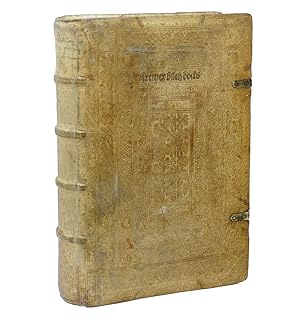
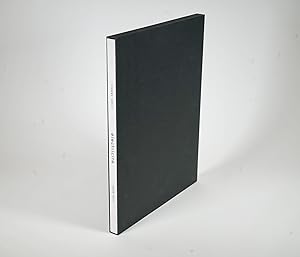
![Image du vendeur pour Opera di M. Bartolomeo Scappi, cvoco secreto di Papa Pio Quinto, divisa in sei libri. Nel primo si contiene il ragionamento che fa l Autore con Gio suo discepolo. Nel secondo si tratta di diverse vivande di carne, si di quadrupedi, come di volatili. Nel terzo si parla della Statura, e stagione de pesci. Nel quarto si mostrano le liste del presentar le vivande in tavola, cosi di grasso come di magro. Nel quinto si contiene l ordine di far diverse sorti di paste, & altri lavori. Nel sesto, & ultimo libro si ragiona de convale scenti, & molte altre sorti di vivande per gli infermi [ ]. mis en vente par Librairie Camille Sourget](https://pictures.abebooks.com/inventory/md/md31514613061.jpg)
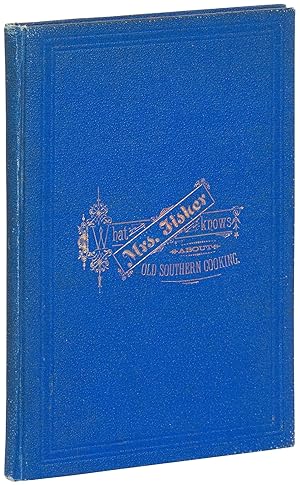
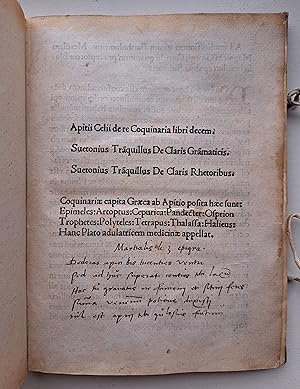
![Image du vendeur pour [DUCHESSE DE BERRY] The History of The Royal Residences of Windsor Castle, St. Jame's Palace, Carlton House. . . mis en vente par Pingel Rare Books](https://pictures.abebooks.com/inventory/md/md31371817075.jpg)
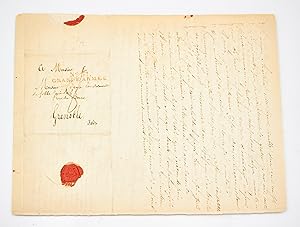
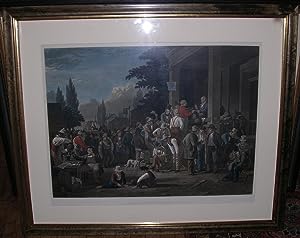
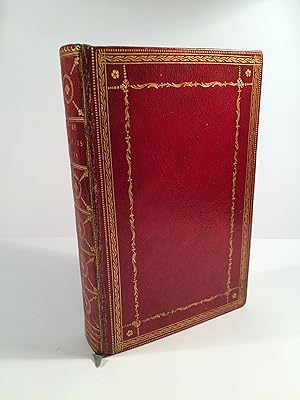
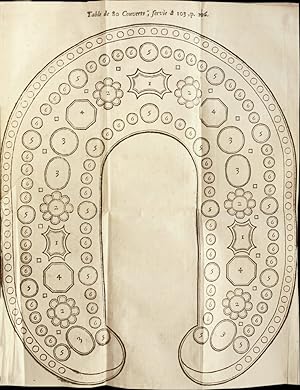
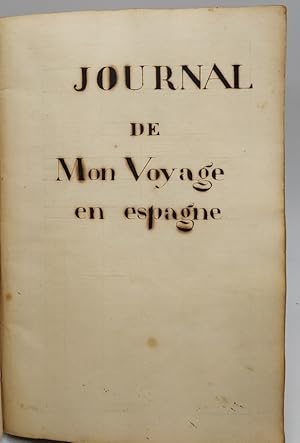
![Image du vendeur pour Voyage pittoresque en Californie et au Chili; Iles Malouines; - Terres Magellaniques; - Détroit de Magellan; - Terre-de-Feu; - Terre-des-États; - Cap-Horn; etc.; par M. Ch. de Lambertie, auteur de Maïna et d'Hermann. [.]. [Bound with:] Le drame de la Sonora, l'état de Sonora, M. le Comte de Raousset-Boulbon et M. Charles de Pindray, par M. Charles Lambertie, Auteur du Voyage pittoresque en Californie, au Chili, au Mexique, etc. (Oeuvres de M. Lambertie. Histoire et voyages.) mis en vente par Földvári Books](https://pictures.abebooks.com/inventory/md/md31573339727.jpg)
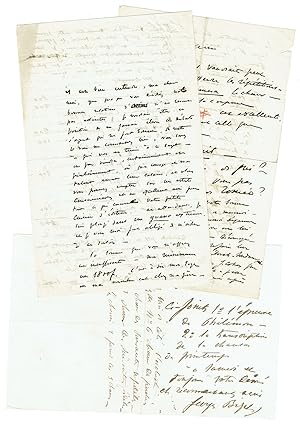
![Image du vendeur pour Neues Saltzburgisches Koch-Buch, für hochfürstliche und andere vornehme Höfe, Closter, Herren-Hauser, Hof- und Hauss-Meister, Koch und Einkäuffer; wie auch fur einschichtige, gesund und krancke Persohnen, nicht allein zu Hauss, sondern auch im Feld. Mit mehr dann 2500. Speisen, und 318. in schönen Kupffergestochenen Formen [.]. Bestehend aus 4. Theilen, in 8. Büchern eingetheilt bey deren jeden ein doppelt Register mit angehänget. mis en vente par Versandantiquariat Wolfgang Friebes](https://pictures.abebooks.com/inventory/md/md31137419712.jpg)
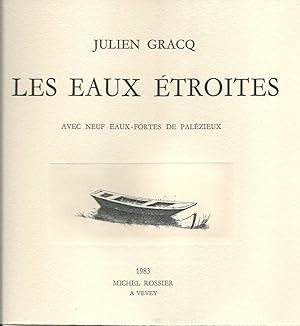
![Image du vendeur pour å æ ¥è [Shima Nikki] = Island diary mis en vente par Rulon-Miller Books (ABAA / ILAB)](https://pictures.abebooks.com/inventory/md/md19930882410.jpg)
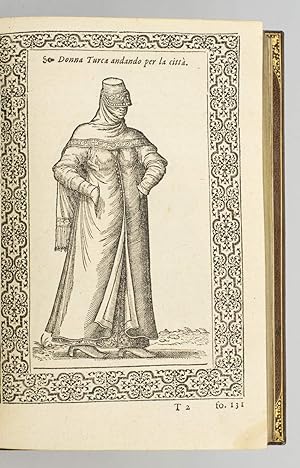
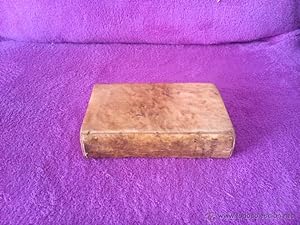
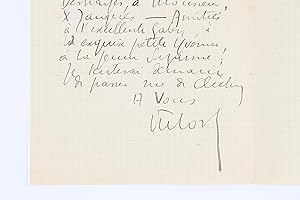
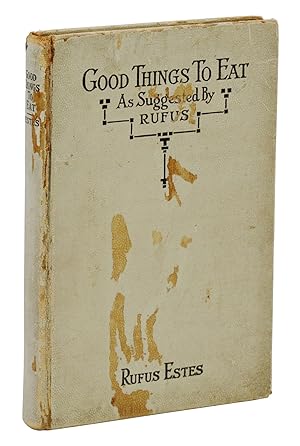
![Image du vendeur pour Les Diners de Gala [The Dali Cookbook] mis en vente par Manhattan Rare Book Company, ABAA, ILAB](https://pictures.abebooks.com/inventory/md/md31514140993.jpg)
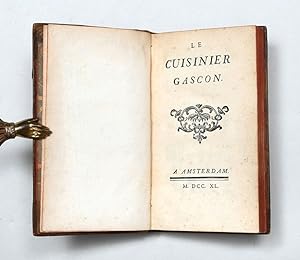
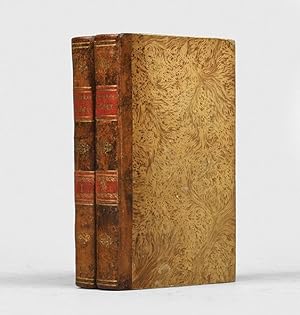
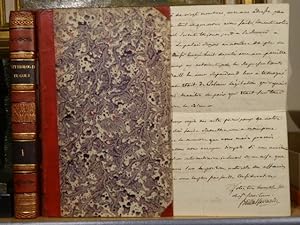
![Image du vendeur pour Manuscript on paper, entitled on paper label on upper cover "Chosen jin tochaku on kondate" ["Banquet Menus for Korean Delegations"] mis en vente par Jonathan A. Hill, Bookseller Inc.](https://pictures.abebooks.com/inventory/md/md30787574931.jpg)
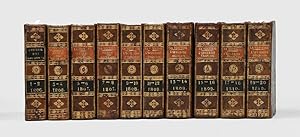
![Image du vendeur pour [TRAVEL] [MANUSCRIPT] : A Tour Through Denmark, Sweden, Finland, to Petersburg from there through Prussia, Brunswick, Hanover and Holland in the Summer of 1835 mis en vente par Cleveland Book Company, ABAA](https://pictures.abebooks.com/inventory/md/md31192463903.jpg)
![Image du vendeur pour Opera di M. Bartolomeo Scappi, cuoco secreto di Papa Pio Quinto divisa in sei libri [bound with] Il Trinciante mis en vente par Pazzo Books](https://pictures.abebooks.com/inventory/md/md31695695990.jpg)
